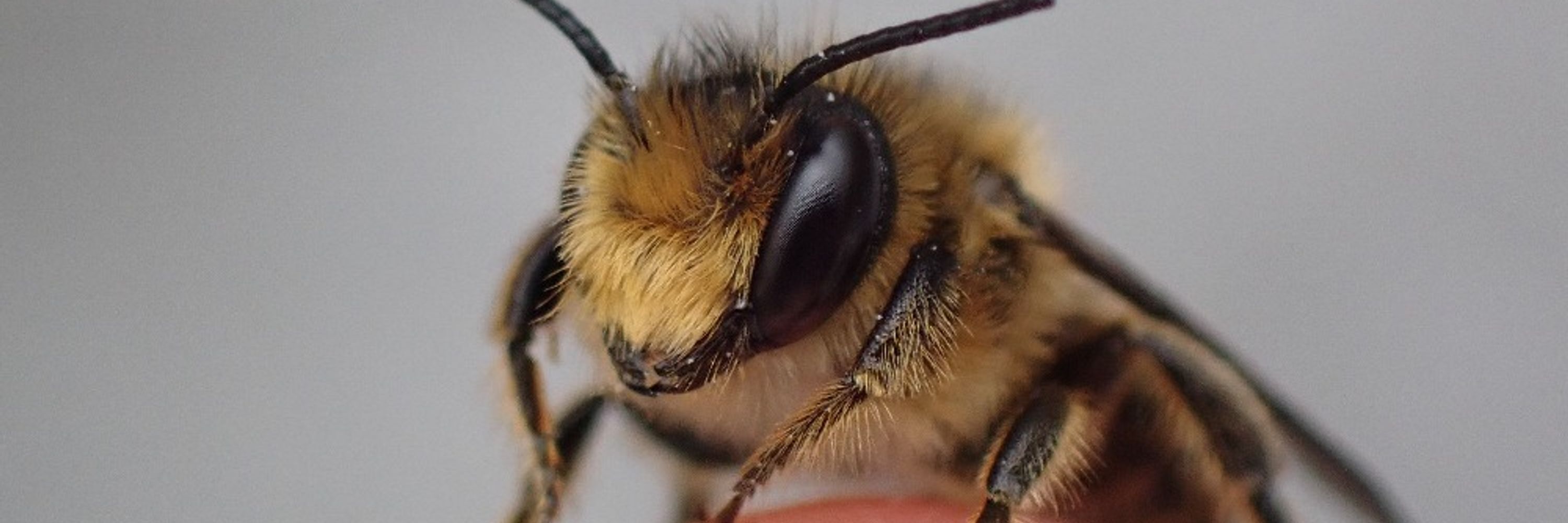
Ireland's Incredible Invertebrates!
@microwild.bsky.social
TL;DR: All things about Irish insects and invertebrates.
An Irish naturalist sharing experiences, education and enthusiasm.
Harvestman validator for the National Biodiversity Data Centre.
Founder of https://microwild.org
Call me: Brian
An Irish naturalist sharing experiences, education and enthusiasm.
Harvestman validator for the National Biodiversity Data Centre.
Founder of https://microwild.org
Call me: Brian
Pinned

It was such a privilege and pleasure to talk to @tcddublin.bsky.social entomology students today about microWild, invertebrate conservation, and Ireland Incredible Invertebrates.
Thanks to Sarah Larragy and Prof. Jane Stout for the opportunity.
Thanks to Sarah Larragy and Prof. Jane Stout for the opportunity.
Serendipity allowed me to catch the exact moment a tiny (1.5mm) Chthonius ischnocheles pseudoscorpion caught and ate a bark louse (Psocoptera).
For some reason, I assumed it would use its palps (pincers) more, but it didn't. It just chomped away with its chelicerae (jaws).
For some reason, I assumed it would use its palps (pincers) more, but it didn't. It just chomped away with its chelicerae (jaws).

November 7, 2025 at 12:40 PM
Serendipity allowed me to catch the exact moment a tiny (1.5mm) Chthonius ischnocheles pseudoscorpion caught and ate a bark louse (Psocoptera).
For some reason, I assumed it would use its palps (pincers) more, but it didn't. It just chomped away with its chelicerae (jaws).
For some reason, I assumed it would use its palps (pincers) more, but it didn't. It just chomped away with its chelicerae (jaws).
Meet Artioposthia exulans
This flatworm specimen was sent to me to photograph and share it with you all. A non-native visitor to this island, it seems to be located primarily in the south-west and most likely arrived on horticultural goods, once again, highlighting the importance of biosecurity.
This flatworm specimen was sent to me to photograph and share it with you all. A non-native visitor to this island, it seems to be located primarily in the south-west and most likely arrived on horticultural goods, once again, highlighting the importance of biosecurity.

November 7, 2025 at 12:32 PM
Meet Artioposthia exulans
This flatworm specimen was sent to me to photograph and share it with you all. A non-native visitor to this island, it seems to be located primarily in the south-west and most likely arrived on horticultural goods, once again, highlighting the importance of biosecurity.
This flatworm specimen was sent to me to photograph and share it with you all. A non-native visitor to this island, it seems to be located primarily in the south-west and most likely arrived on horticultural goods, once again, highlighting the importance of biosecurity.
I was out surveying today, Blessington lakeside, and turned a stone only to find not one but two really scarce harvestmen (and you know I liove my harvestmen).
The last time Mitostoma chrysomelas was recorded in the Republic of Ireland was way, way back in 1997.
Isn't it a little stunner!!!?
The last time Mitostoma chrysomelas was recorded in the Republic of Ireland was way, way back in 1997.
Isn't it a little stunner!!!?

September 28, 2025 at 7:03 PM
I was out surveying today, Blessington lakeside, and turned a stone only to find not one but two really scarce harvestmen (and you know I liove my harvestmen).
The last time Mitostoma chrysomelas was recorded in the Republic of Ireland was way, way back in 1997.
Isn't it a little stunner!!!?
The last time Mitostoma chrysomelas was recorded in the Republic of Ireland was way, way back in 1997.
Isn't it a little stunner!!!?
Don't forget, tonight you can join me for a 90-minute chat about Ireland's Incredible Invertebrates. Grab your ticket here while you can:
inverts-2025.eventbrite.ie
There are so many things to talk about, 116 slides' worth of things to be exact! 🙂
inverts-2025.eventbrite.ie
There are so many things to talk about, 116 slides' worth of things to be exact! 🙂

September 15, 2025 at 8:56 AM
Don't forget, tonight you can join me for a 90-minute chat about Ireland's Incredible Invertebrates. Grab your ticket here while you can:
inverts-2025.eventbrite.ie
There are so many things to talk about, 116 slides' worth of things to be exact! 🙂
inverts-2025.eventbrite.ie
There are so many things to talk about, 116 slides' worth of things to be exact! 🙂
Just one day before we settle down for a detailed yet accessible chat about Irish Bumblebees. There are still some places available if you'd like to get on board.
Just follow the link to get your ticket...
irish-bumblebees-2025.eventbrite.ie
Just follow the link to get your ticket...
irish-bumblebees-2025.eventbrite.ie

Irish Bumblebees for Beginners 2025 - The Magnificent Seven plus a few more
A 90-minute run through Ireland's most common Bumblebee species. Where do they live and nest? And how to identify them to species level.
irish-bumblebees-2025.eventbrite.ie
September 7, 2025 at 12:35 PM
Just one day before we settle down for a detailed yet accessible chat about Irish Bumblebees. There are still some places available if you'd like to get on board.
Just follow the link to get your ticket...
irish-bumblebees-2025.eventbrite.ie
Just follow the link to get your ticket...
irish-bumblebees-2025.eventbrite.ie
Last chance to grab a ticket to this evening's webinar, The Weird & Wonderful World of Irish Wasps.
I promise you some mind-blowing facts and anecdotes.
irish-wasps-2025.eventbrite.ie
I promise you some mind-blowing facts and anecdotes.
irish-wasps-2025.eventbrite.ie

September 1, 2025 at 10:03 AM
Last chance to grab a ticket to this evening's webinar, The Weird & Wonderful World of Irish Wasps.
I promise you some mind-blowing facts and anecdotes.
irish-wasps-2025.eventbrite.ie
I promise you some mind-blowing facts and anecdotes.
irish-wasps-2025.eventbrite.ie
There's very little that matches the excitement of finding a pseudoscorpion for me. They are so few and far between that they always warrant a mini celebration.
This stunning specimen is Chthonius ischnocheles (get your tongue around that!).
Have you ever seen a pseudoscorpion? Let me know...
This stunning specimen is Chthonius ischnocheles (get your tongue around that!).
Have you ever seen a pseudoscorpion? Let me know...

August 27, 2025 at 5:45 PM
There's very little that matches the excitement of finding a pseudoscorpion for me. They are so few and far between that they always warrant a mini celebration.
This stunning specimen is Chthonius ischnocheles (get your tongue around that!).
Have you ever seen a pseudoscorpion? Let me know...
This stunning specimen is Chthonius ischnocheles (get your tongue around that!).
Have you ever seen a pseudoscorpion? Let me know...
And the final webinar for the moment... this time it's Ireland's Incredible Invertebrates. This started out as a presentation to entomology students in Trinity. 🙂
Monday, September 15th @ 19:30
Grab your ticket here: inverts-2025.eventbrite.ie
Monday, September 15th @ 19:30
Grab your ticket here: inverts-2025.eventbrite.ie

Ireland's Incredible Invertebrates
Join us for an exploration of some of Ireland's tiny but mighty invertebrates!
inverts-2025.eventbrite.ie
August 26, 2025 at 2:51 PM
And the final webinar for the moment... this time it's Ireland's Incredible Invertebrates. This started out as a presentation to entomology students in Trinity. 🙂
Monday, September 15th @ 19:30
Grab your ticket here: inverts-2025.eventbrite.ie
Monday, September 15th @ 19:30
Grab your ticket here: inverts-2025.eventbrite.ie
Monday, 8th September, will see me hosting a webinar on Irish Bumblebees for Beginners, showcasing the most common 7 bumblebees plus a few extra to boot.
Learn about their lifestyles as well as how to identify them.
Get your ticket here: irish-bumblebees-2025.eventbrite.ie
Learn about their lifestyles as well as how to identify them.
Get your ticket here: irish-bumblebees-2025.eventbrite.ie

August 25, 2025 at 5:42 PM
Monday, 8th September, will see me hosting a webinar on Irish Bumblebees for Beginners, showcasing the most common 7 bumblebees plus a few extra to boot.
Learn about their lifestyles as well as how to identify them.
Get your ticket here: irish-bumblebees-2025.eventbrite.ie
Learn about their lifestyles as well as how to identify them.
Get your ticket here: irish-bumblebees-2025.eventbrite.ie
The Weird & Wonderful World of Irish Wasps
Come join me for this webinar, next Monday, 1st September.
Tickets are Pay What You Can: irish-wasps-2025.eventbrite.ie
Come join me for this webinar, next Monday, 1st September.
Tickets are Pay What You Can: irish-wasps-2025.eventbrite.ie
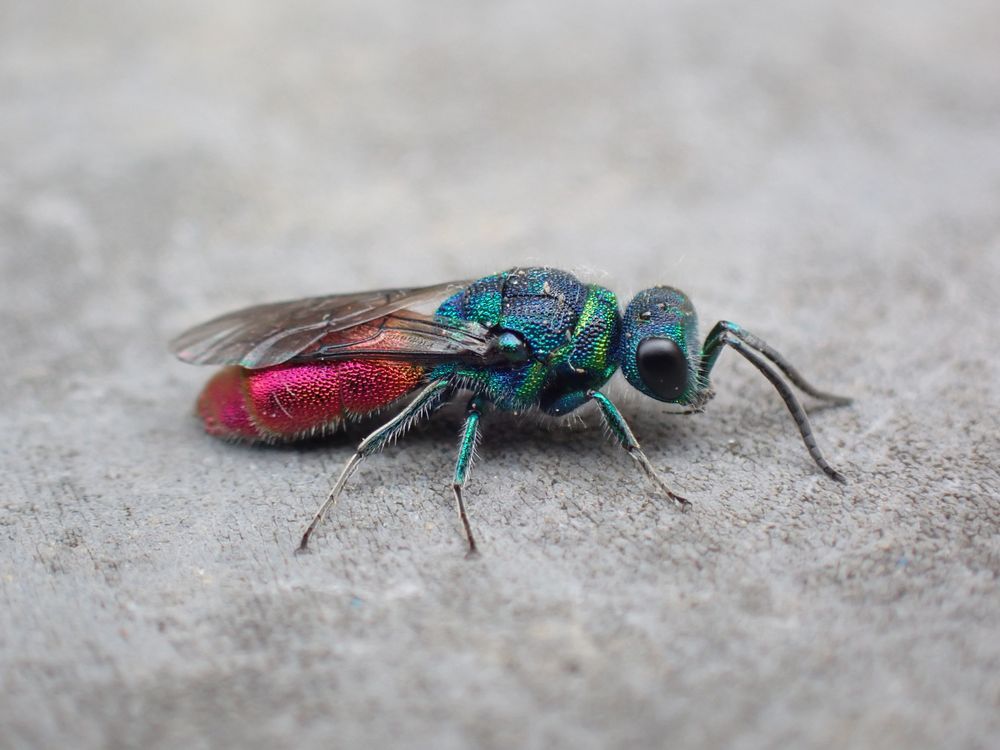
August 25, 2025 at 3:10 PM
The Weird & Wonderful World of Irish Wasps
Come join me for this webinar, next Monday, 1st September.
Tickets are Pay What You Can: irish-wasps-2025.eventbrite.ie
Come join me for this webinar, next Monday, 1st September.
Tickets are Pay What You Can: irish-wasps-2025.eventbrite.ie
A really exciting find for me this weekend in my parents' front garden.
Say hello to the Nosy Pill Woodlouse, Armadillidium nasatum.
This is the first record of it in the wild in Ireland (i.e. outside of a garden centre). Keep an eye out for strange things; you never know what you'll find.
Say hello to the Nosy Pill Woodlouse, Armadillidium nasatum.
This is the first record of it in the wild in Ireland (i.e. outside of a garden centre). Keep an eye out for strange things; you never know what you'll find.



August 25, 2025 at 10:15 AM
A really exciting find for me this weekend in my parents' front garden.
Say hello to the Nosy Pill Woodlouse, Armadillidium nasatum.
This is the first record of it in the wild in Ireland (i.e. outside of a garden centre). Keep an eye out for strange things; you never know what you'll find.
Say hello to the Nosy Pill Woodlouse, Armadillidium nasatum.
This is the first record of it in the wild in Ireland (i.e. outside of a garden centre). Keep an eye out for strange things; you never know what you'll find.
Every field surveyor's worst nightmare.
This is an adult tick (Ixodes ricinus).
Photo 1: Dormant
Photo 2: It smelled my breath or felt the heat of my finger using special organs (Haller's Organ) on its forelegs and started to wake
Photo 3: It tried to give me a hug 😬
Amazing creatures.
This is an adult tick (Ixodes ricinus).
Photo 1: Dormant
Photo 2: It smelled my breath or felt the heat of my finger using special organs (Haller's Organ) on its forelegs and started to wake
Photo 3: It tried to give me a hug 😬
Amazing creatures.

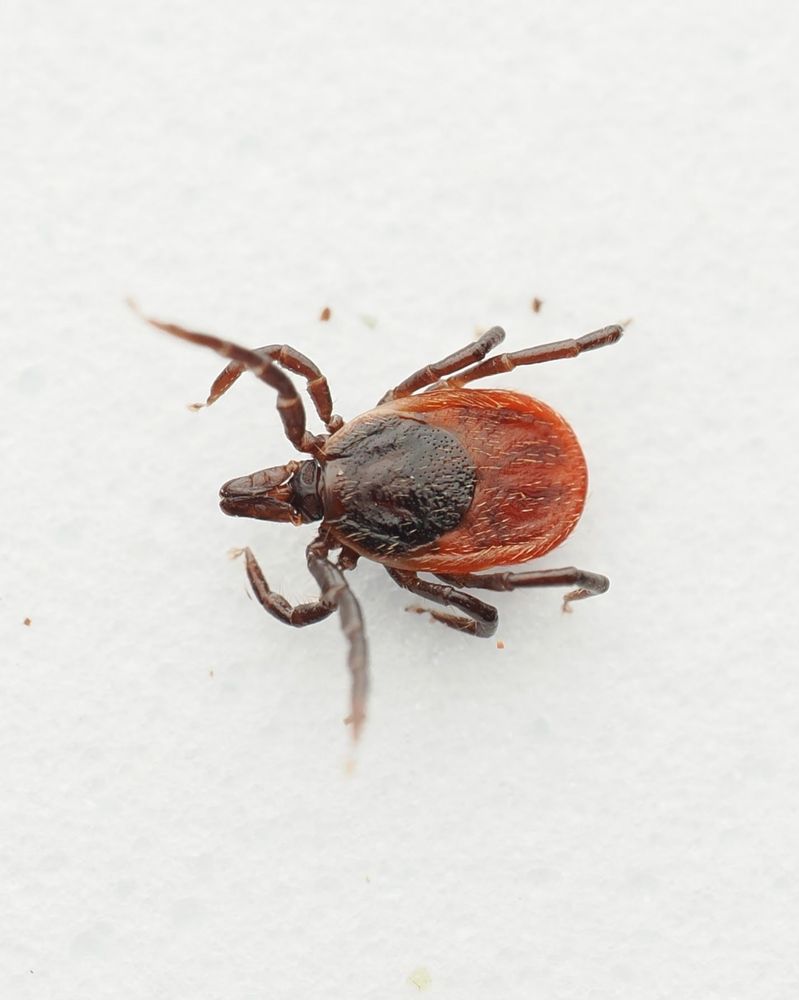

August 25, 2025 at 7:27 AM
Every field surveyor's worst nightmare.
This is an adult tick (Ixodes ricinus).
Photo 1: Dormant
Photo 2: It smelled my breath or felt the heat of my finger using special organs (Haller's Organ) on its forelegs and started to wake
Photo 3: It tried to give me a hug 😬
Amazing creatures.
This is an adult tick (Ixodes ricinus).
Photo 1: Dormant
Photo 2: It smelled my breath or felt the heat of my finger using special organs (Haller's Organ) on its forelegs and started to wake
Photo 3: It tried to give me a hug 😬
Amazing creatures.
This is the tiniest little jumping spider I came across yesterday while surveying my parents' front garden.
I know it's anthropomorphic, but jumping spiders always look a little worried to me. I want to help them, but I'm not quite sure how... 🙂
I know it's anthropomorphic, but jumping spiders always look a little worried to me. I want to help them, but I'm not quite sure how... 🙂

August 24, 2025 at 5:23 PM
This is the tiniest little jumping spider I came across yesterday while surveying my parents' front garden.
I know it's anthropomorphic, but jumping spiders always look a little worried to me. I want to help them, but I'm not quite sure how... 🙂
I know it's anthropomorphic, but jumping spiders always look a little worried to me. I want to help them, but I'm not quite sure how... 🙂
This is the business end of a Brown Hawker Dragonfly. If you are a flying invertebrate, you do not want to see this up close.
Dragonflies are exceptional on-the-wing hunters with a success rate that is unmatched in the animal kingdom.
Dragonflies are exceptional on-the-wing hunters with a success rate that is unmatched in the animal kingdom.

August 18, 2025 at 6:50 PM
This is the business end of a Brown Hawker Dragonfly. If you are a flying invertebrate, you do not want to see this up close.
Dragonflies are exceptional on-the-wing hunters with a success rate that is unmatched in the animal kingdom.
Dragonflies are exceptional on-the-wing hunters with a success rate that is unmatched in the animal kingdom.
Last spider pic for a while, I promise... 👀
This beautiful Flower Crab Spider (Misumena vatia) was spotted hiding out on some Thistle flowers, waiting for an unsuspecting meal. We saw it eye up an Eristalis tenax (Drone Fly), but it opted out as the fly was quite large.
This beautiful Flower Crab Spider (Misumena vatia) was spotted hiding out on some Thistle flowers, waiting for an unsuspecting meal. We saw it eye up an Eristalis tenax (Drone Fly), but it opted out as the fly was quite large.
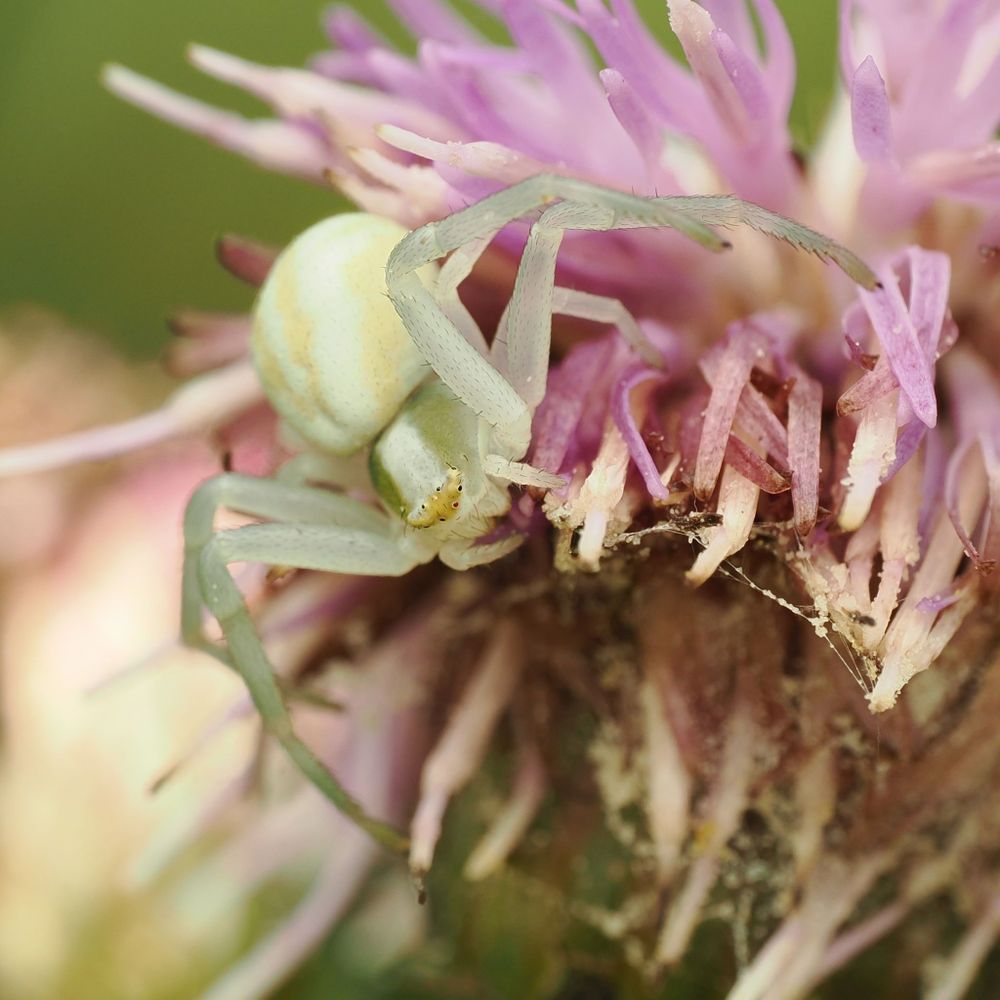
August 15, 2025 at 8:58 AM
Last spider pic for a while, I promise... 👀
This beautiful Flower Crab Spider (Misumena vatia) was spotted hiding out on some Thistle flowers, waiting for an unsuspecting meal. We saw it eye up an Eristalis tenax (Drone Fly), but it opted out as the fly was quite large.
This beautiful Flower Crab Spider (Misumena vatia) was spotted hiding out on some Thistle flowers, waiting for an unsuspecting meal. We saw it eye up an Eristalis tenax (Drone Fly), but it opted out as the fly was quite large.
@collieennis.bsky.social and I went on a special adventure yesterday, including checking on a population of Cave Spiders (Meta menardi). Hunched over, walking down a smelly underground tunnel and trying desperately to avoid badger poo, I eventually got face-to-face with this stunning specimen.

August 14, 2025 at 3:50 PM
@collieennis.bsky.social and I went on a special adventure yesterday, including checking on a population of Cave Spiders (Meta menardi). Hunched over, walking down a smelly underground tunnel and trying desperately to avoid badger poo, I eventually got face-to-face with this stunning specimen.
Just look at this beautiful Trochosa species spider, found under a granite rock, lakeside in Valleymount, West Wicklow. These are bigger than your average wolf spider!
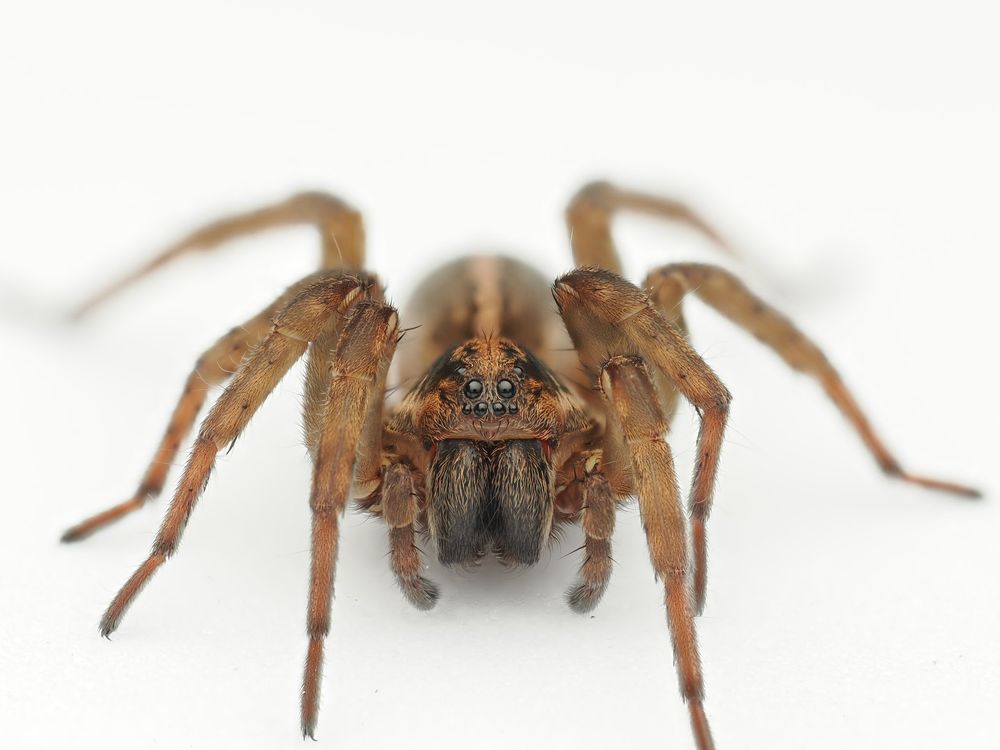
August 12, 2025 at 2:49 PM
Just look at this beautiful Trochosa species spider, found under a granite rock, lakeside in Valleymount, West Wicklow. These are bigger than your average wolf spider!
irish-harvestmen.eventbrite.ie
Don't forget, this is tonight at 7:30pm... tickets (Pay What You Can) are still available for the next few hours.
Don't forget, this is tonight at 7:30pm... tickets (Pay What You Can) are still available for the next few hours.
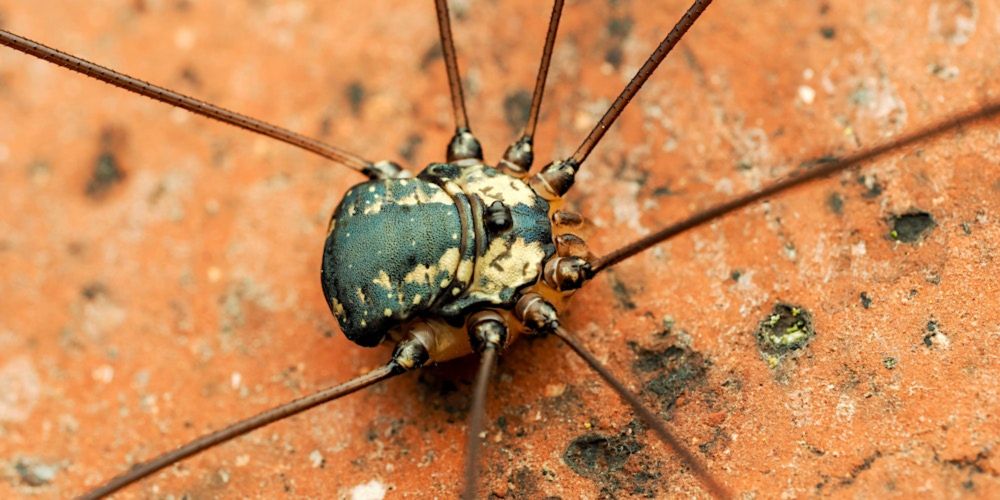
Not Spiders! Irish Harvestmen for Beginners
Get ready to discover the fascinating world of Irish Harvestmen in a beginner-friendly session full of interesting facts and surprises!
irish-harvestmen.eventbrite.ie
August 11, 2025 at 11:54 AM
irish-harvestmen.eventbrite.ie
Don't forget, this is tonight at 7:30pm... tickets (Pay What You Can) are still available for the next few hours.
Don't forget, this is tonight at 7:30pm... tickets (Pay What You Can) are still available for the next few hours.
Join me this Monday for a 90-minute online session about one of my favorite topics: Irish Harvestmen. By the end, you'll distinguish between Nemastoma, Oligolophus, Phalangium and more.
Tickets are Pay What You Can, and if you need a free ticket, just let me know.
irish-harvestmen.eventbrite.ie
Tickets are Pay What You Can, and if you need a free ticket, just let me know.
irish-harvestmen.eventbrite.ie
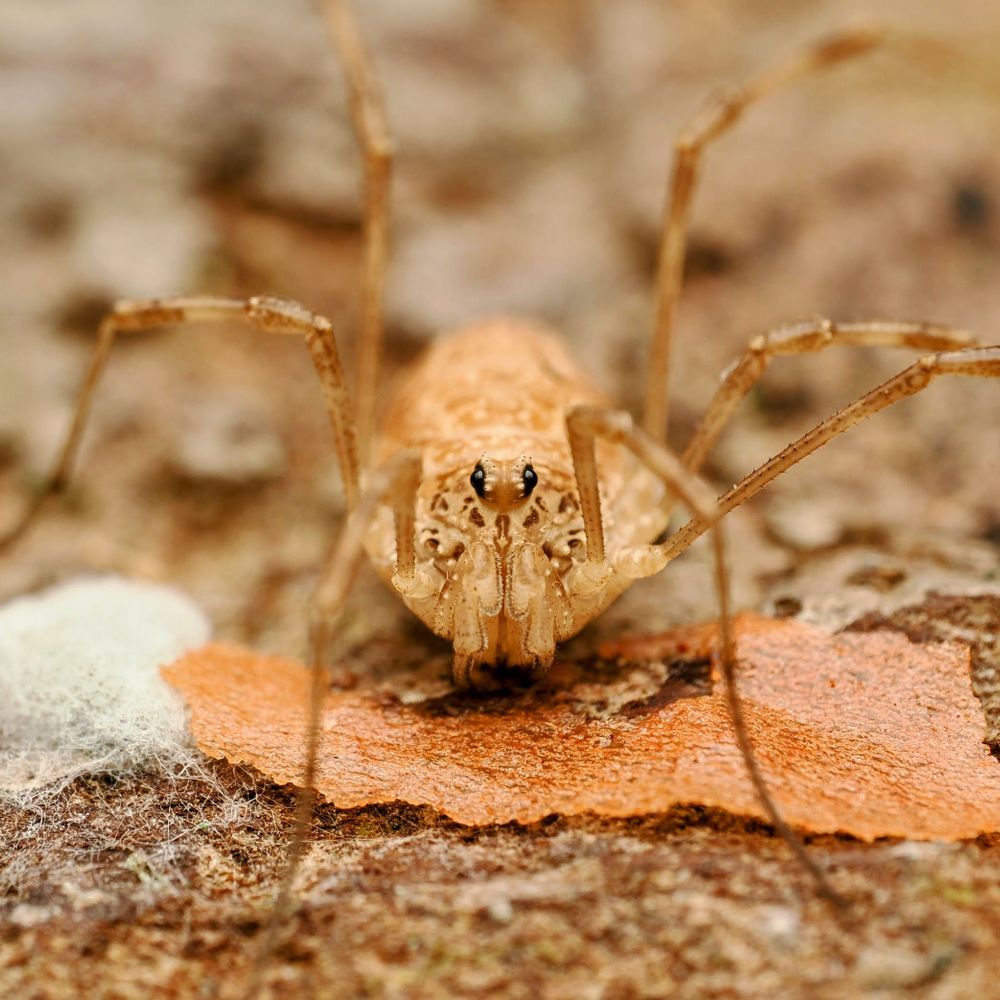
August 6, 2025 at 10:00 AM
Join me this Monday for a 90-minute online session about one of my favorite topics: Irish Harvestmen. By the end, you'll distinguish between Nemastoma, Oligolophus, Phalangium and more.
Tickets are Pay What You Can, and if you need a free ticket, just let me know.
irish-harvestmen.eventbrite.ie
Tickets are Pay What You Can, and if you need a free ticket, just let me know.
irish-harvestmen.eventbrite.ie
This Saturday, I will be in Cork for an invertebrate walk at Fota House and Gardens organised by the Irish Bee Conservation Project.
If it flies, walks, crawls, or slithers, I'll find it and tell you about it. I'm really looking forward to this.
Some tickets still available at: bit.ly/fotabugs
If it flies, walks, crawls, or slithers, I'll find it and tell you about it. I'm really looking forward to this.
Some tickets still available at: bit.ly/fotabugs
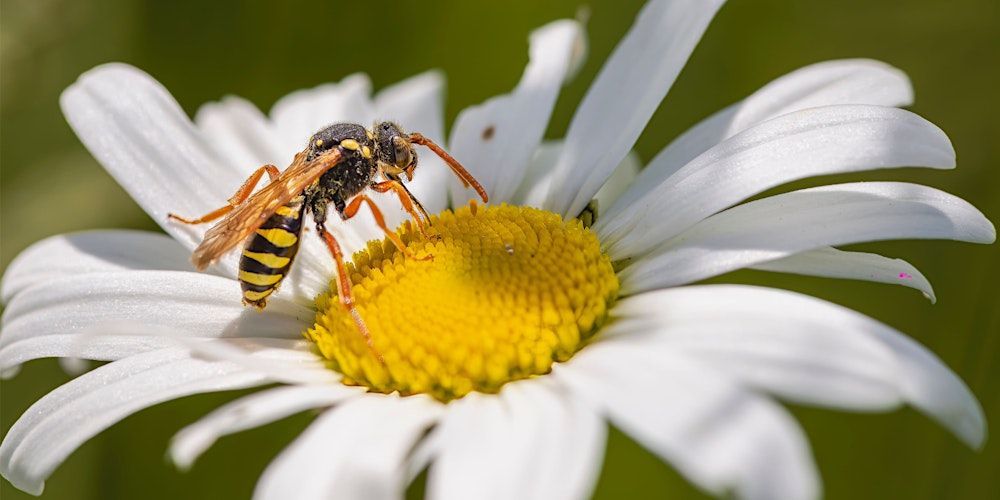
Discover Insects and Invertebrates – with Brian Murray
Join us for a fun and educational day with Entomologist Brian Murray to explore the fascinating world of insects and invertebrates!
bit.ly
July 16, 2025 at 8:50 AM
This Saturday, I will be in Cork for an invertebrate walk at Fota House and Gardens organised by the Irish Bee Conservation Project.
If it flies, walks, crawls, or slithers, I'll find it and tell you about it. I'm really looking forward to this.
Some tickets still available at: bit.ly/fotabugs
If it flies, walks, crawls, or slithers, I'll find it and tell you about it. I'm really looking forward to this.
Some tickets still available at: bit.ly/fotabugs
If I sweep the grass in the meadow with a net, it is absolutely overrun with bugs, true bugs, as well as other things. This is, I believe, a Marsh Damsel Bug (Nabis limbatus). Females lay eggs in grass blades.
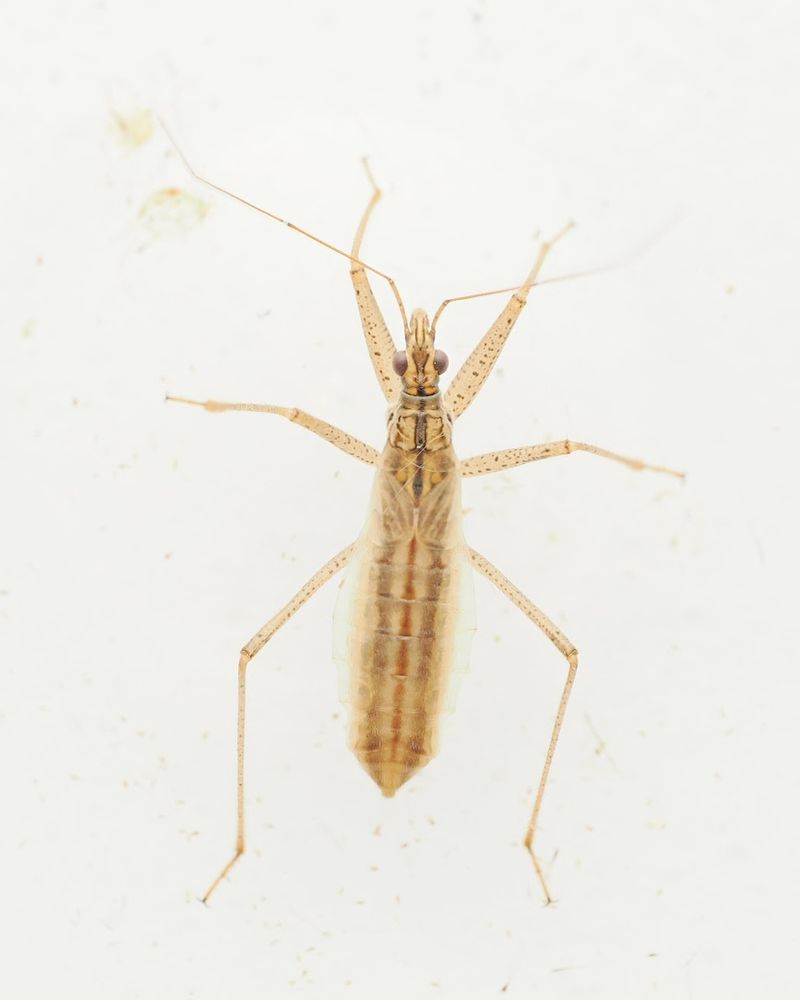

July 15, 2025 at 4:07 PM
If I sweep the grass in the meadow with a net, it is absolutely overrun with bugs, true bugs, as well as other things. This is, I believe, a Marsh Damsel Bug (Nabis limbatus). Females lay eggs in grass blades.
What's going on here, you 'mite' be asking yourself? (See what I did there?)
This female Mitopus morio harvestman is suffering the attention of no less than nine parasitic mites. Each is sucking out her haemolymph for its own benefit.
This female Mitopus morio harvestman is suffering the attention of no less than nine parasitic mites. Each is sucking out her haemolymph for its own benefit.
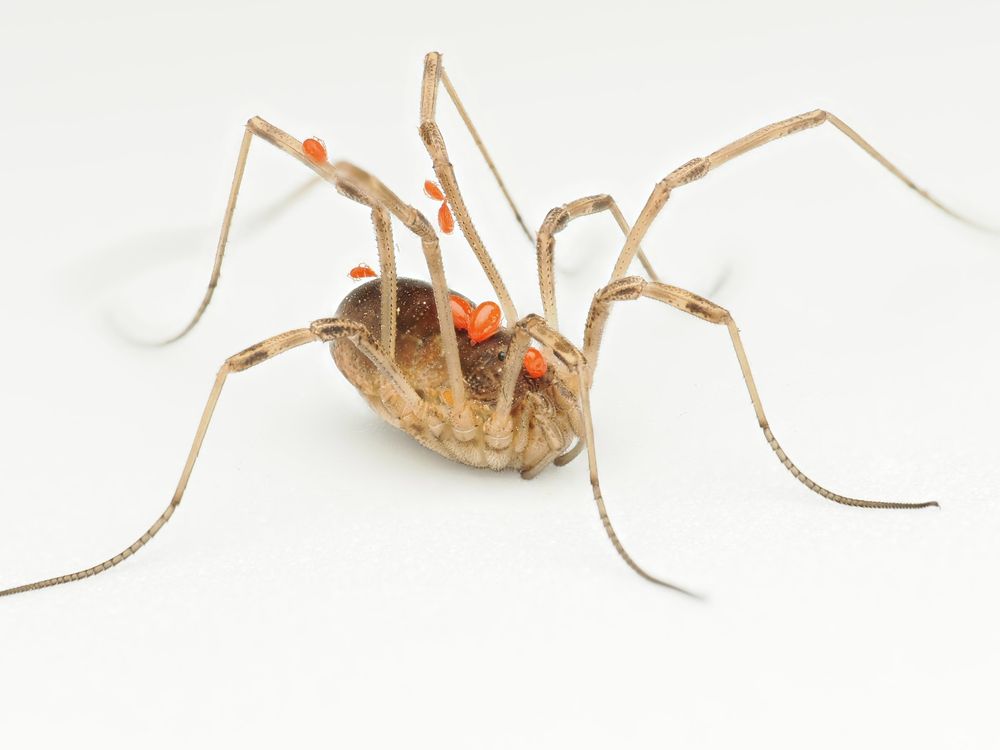
July 14, 2025 at 8:25 AM
What's going on here, you 'mite' be asking yourself? (See what I did there?)
This female Mitopus morio harvestman is suffering the attention of no less than nine parasitic mites. Each is sucking out her haemolymph for its own benefit.
This female Mitopus morio harvestman is suffering the attention of no less than nine parasitic mites. Each is sucking out her haemolymph for its own benefit.
It's rarely only moths we catch in the moth trap.
Just yesterday we had a stonefly (Siphonoperla torrentium), a 10-spot ladybird, a Green Drake Mayfly, a Tipula species Cranefly, dozens of Caddisflies and thousands of midges!
Just yesterday we had a stonefly (Siphonoperla torrentium), a 10-spot ladybird, a Green Drake Mayfly, a Tipula species Cranefly, dozens of Caddisflies and thousands of midges!
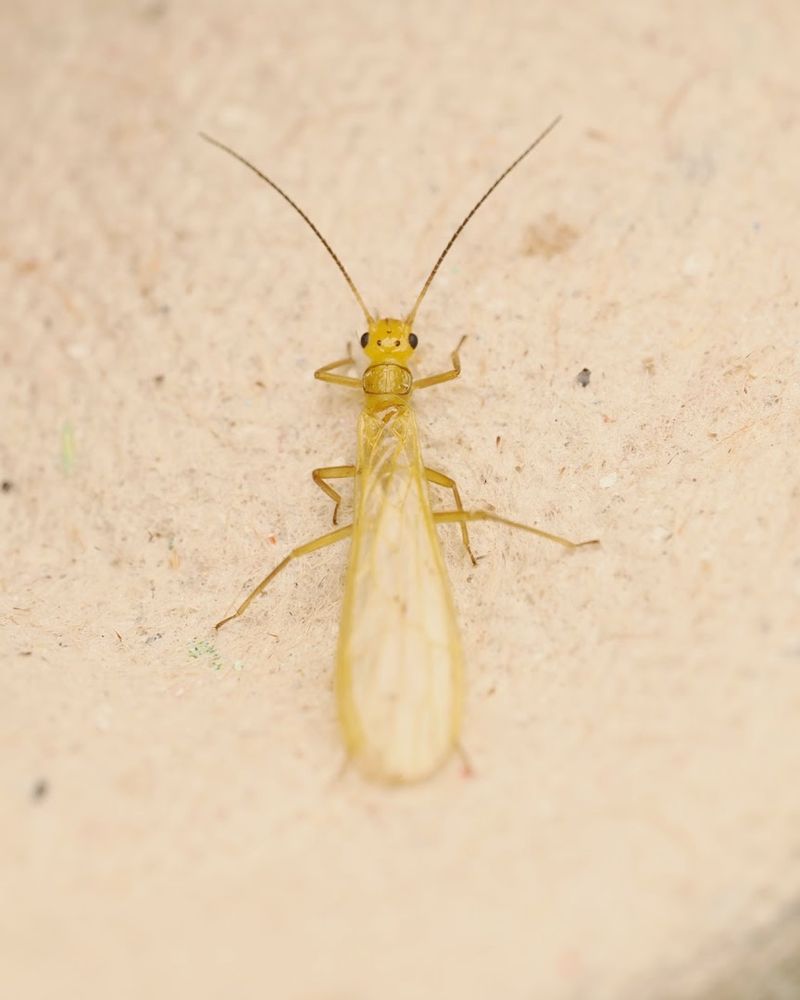
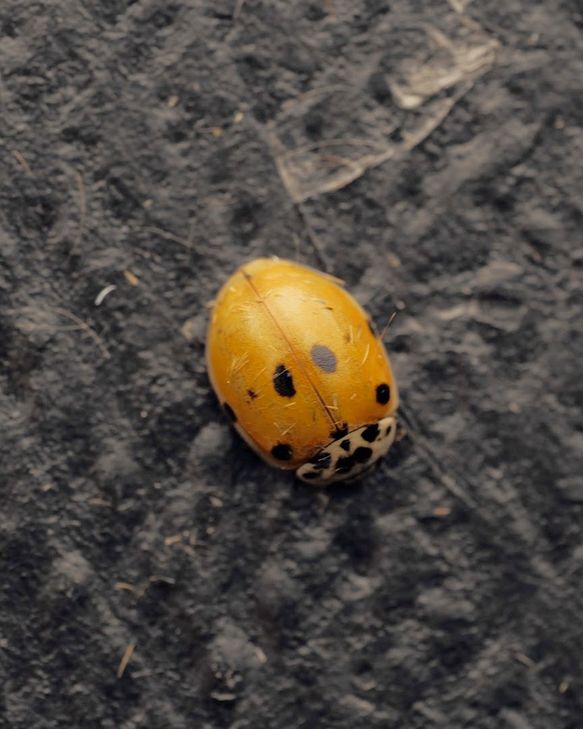

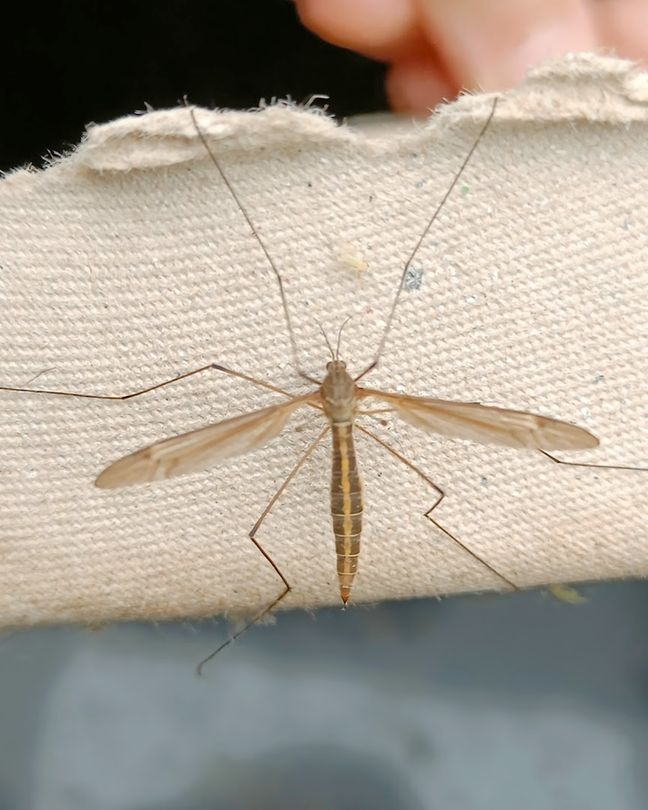
July 10, 2025 at 12:42 PM
It's rarely only moths we catch in the moth trap.
Just yesterday we had a stonefly (Siphonoperla torrentium), a 10-spot ladybird, a Green Drake Mayfly, a Tipula species Cranefly, dozens of Caddisflies and thousands of midges!
Just yesterday we had a stonefly (Siphonoperla torrentium), a 10-spot ladybird, a Green Drake Mayfly, a Tipula species Cranefly, dozens of Caddisflies and thousands of midges!
Another beautiful moth taken from the light trap yesterday. This one is called a Barred Straw.
These fly regularly at night from June to August, and the larvae feed on the Bedstraw family of wildflowers.
These fly regularly at night from June to August, and the larvae feed on the Bedstraw family of wildflowers.
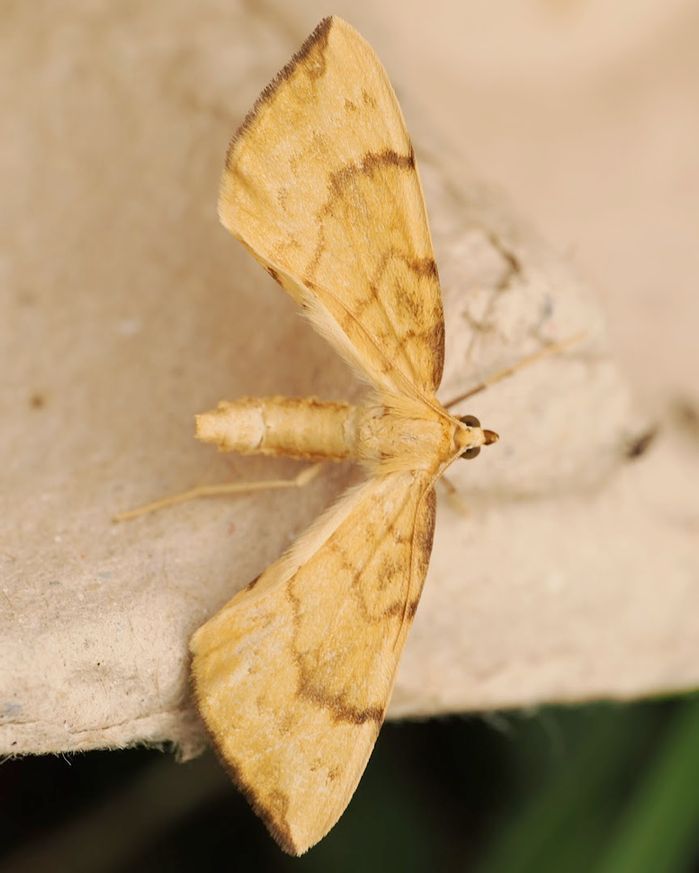
July 10, 2025 at 12:32 PM
Another beautiful moth taken from the light trap yesterday. This one is called a Barred Straw.
These fly regularly at night from June to August, and the larvae feed on the Bedstraw family of wildflowers.
These fly regularly at night from June to August, and the larvae feed on the Bedstraw family of wildflowers.
Not a ladybird I see very often, and noticeably smaller than the 7-spot ladybird it superficially resembles. This is the 11-spot ladybird (Coccinella undecimpunctata). Try saying that three times, fast!
Like many other ladybirds, it feeds on aphids and is therefore beneficial to gardeners.
Like many other ladybirds, it feeds on aphids and is therefore beneficial to gardeners.
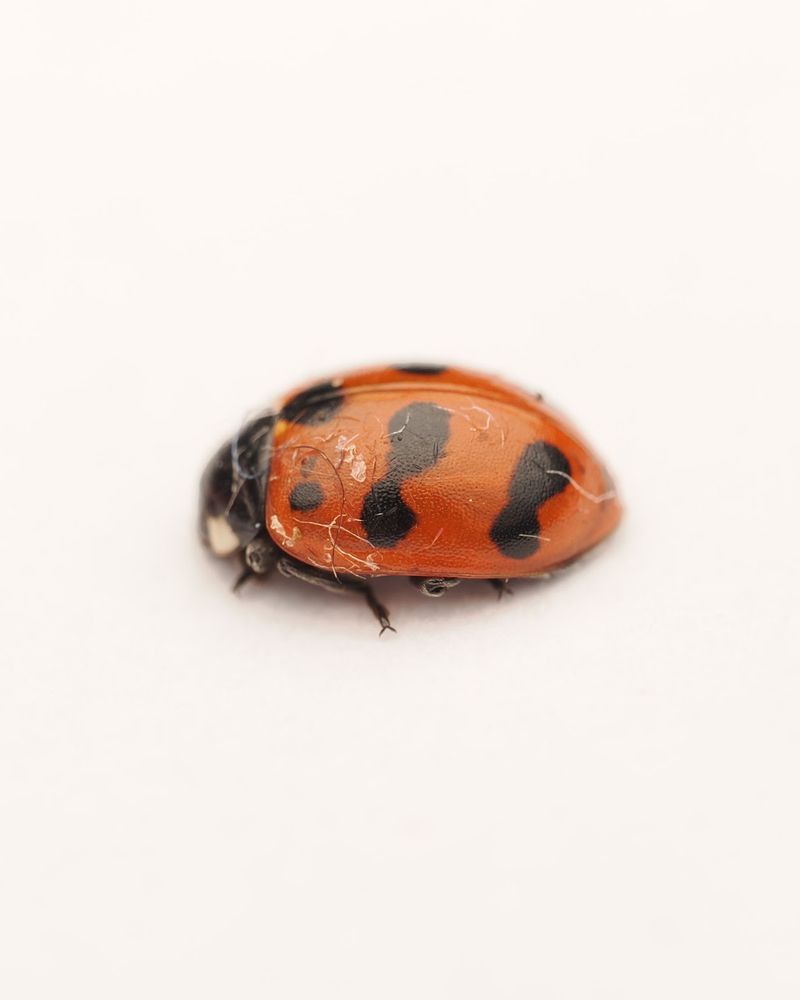
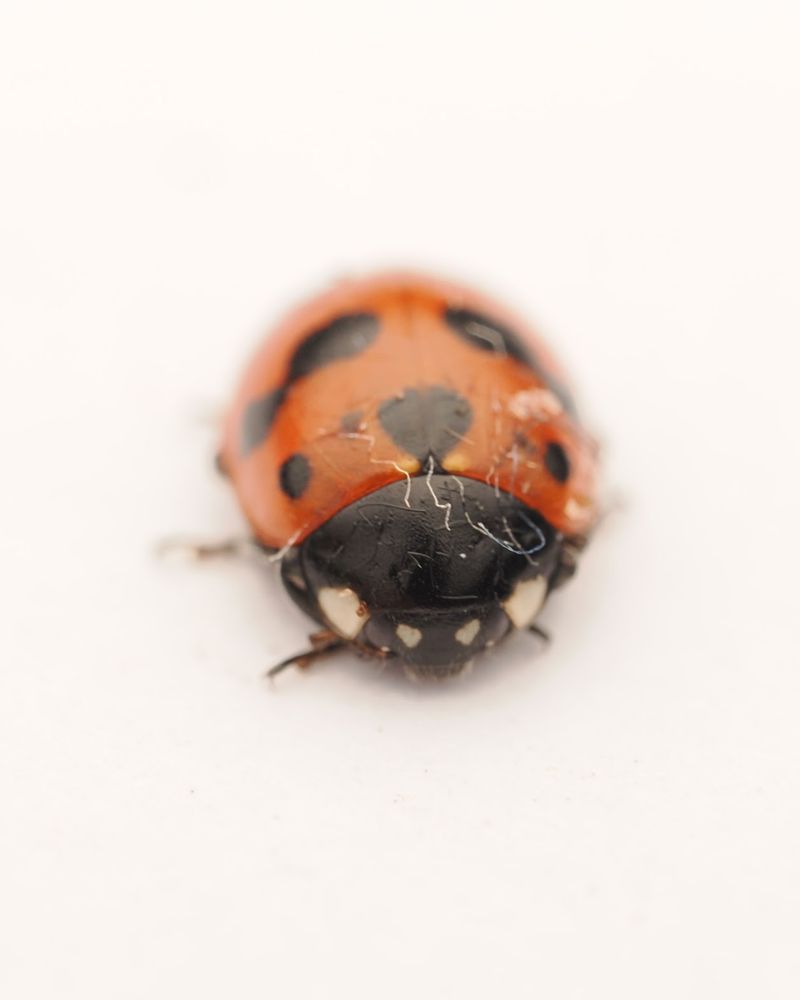
July 8, 2025 at 2:54 PM
Not a ladybird I see very often, and noticeably smaller than the 7-spot ladybird it superficially resembles. This is the 11-spot ladybird (Coccinella undecimpunctata). Try saying that three times, fast!
Like many other ladybirds, it feeds on aphids and is therefore beneficial to gardeners.
Like many other ladybirds, it feeds on aphids and is therefore beneficial to gardeners.

